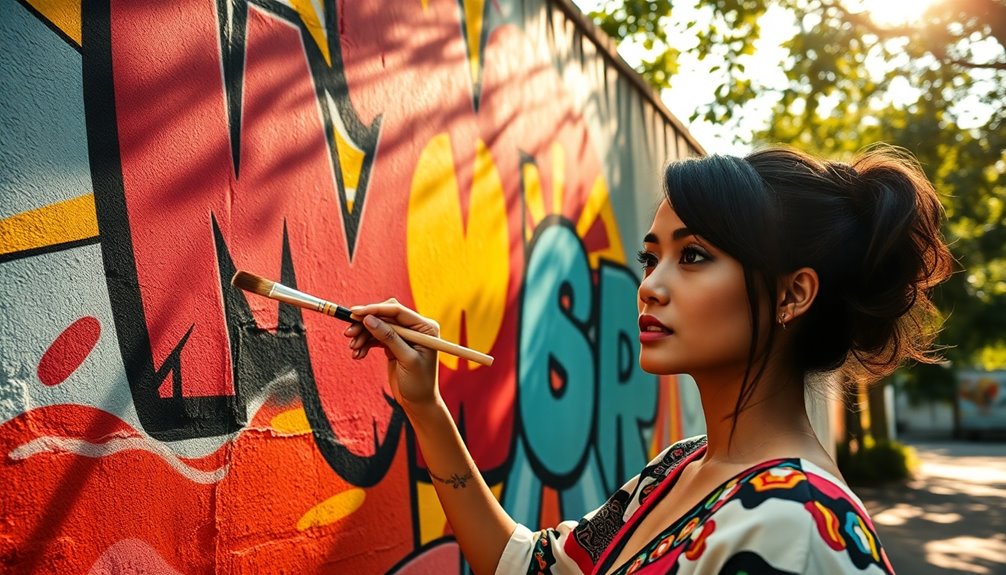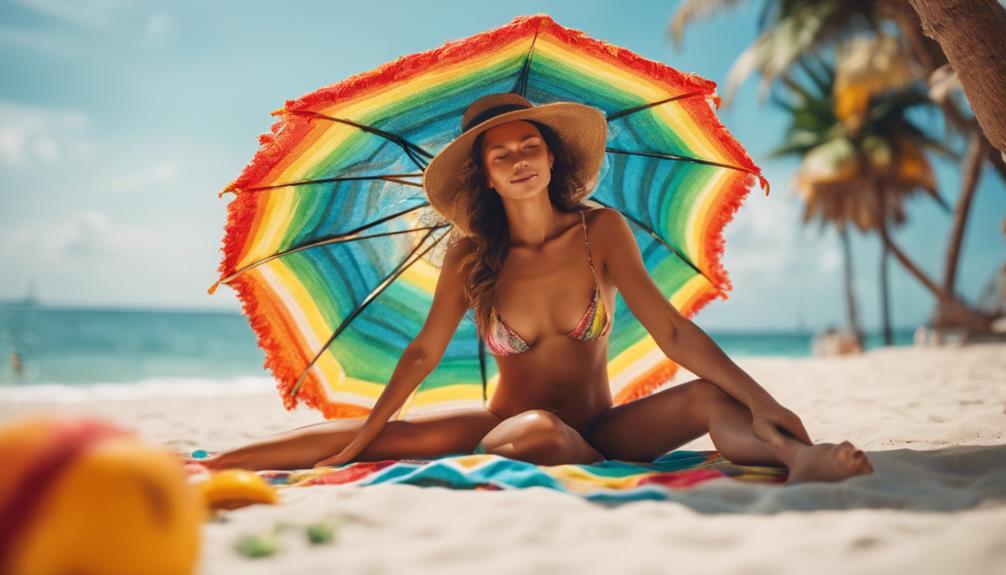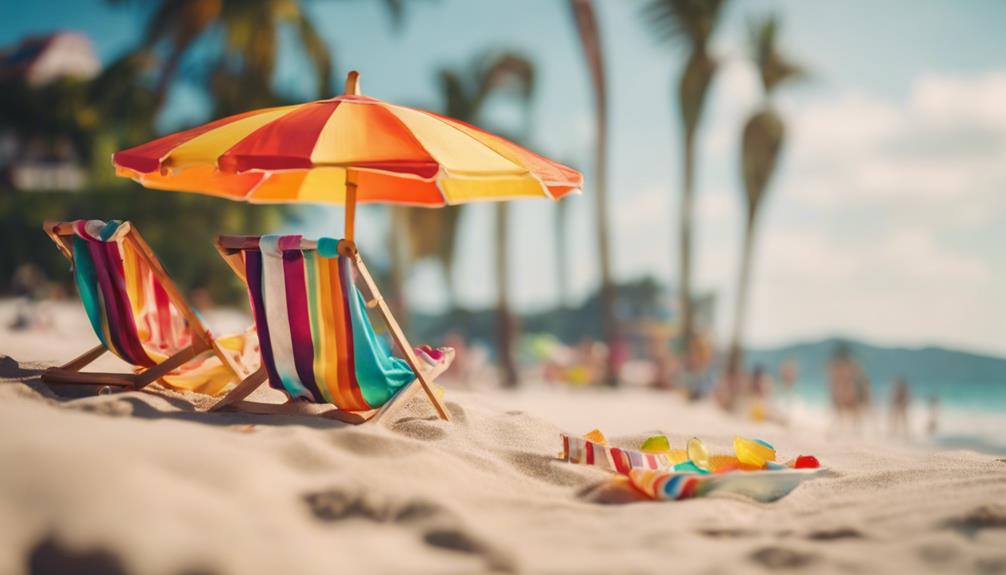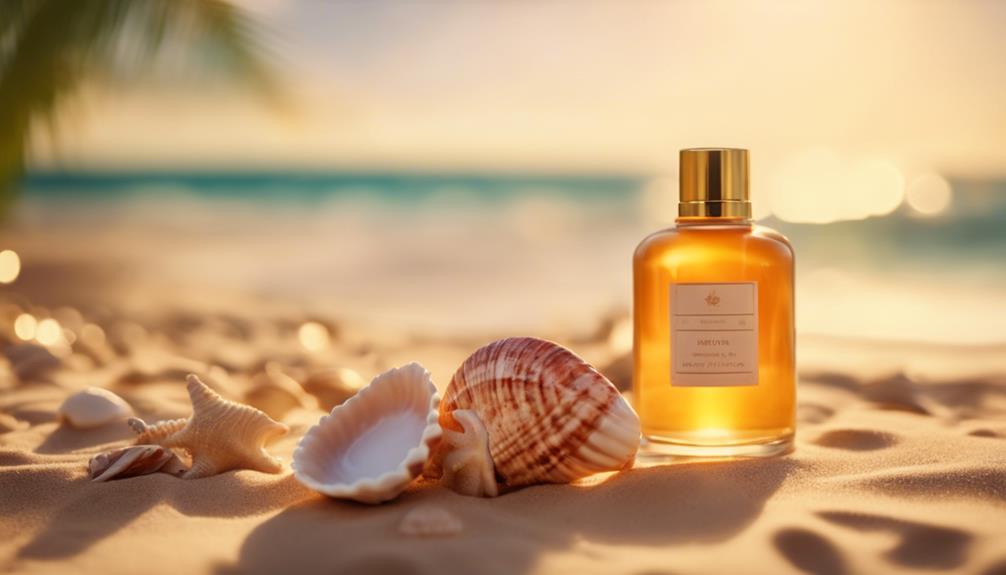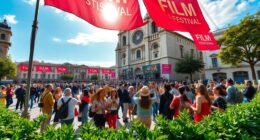In Malaysia's pop art revolution, one woman stands out as a transformative force. Her visionary approach reshapes cultural expression and pushes artistic boundaries, drawing inspiration from the country's rich historical context and diverse identities. By blending traditional themes with contemporary styles, she engages audiences in new ways. This evolution reflects ongoing socio-political narratives and the vibrant dynamic of Malaysian art. Discover how her impact continues to shape the future of Malaysia's artistic landscape.
Key Takeaways
- A prominent woman artist is leading the Malaysian pop art revolution by infusing personal and cultural narratives into her works.
- She blends traditional Malaysian elements with contemporary styles, bridging the gap between heritage and modernity.
- Her exhibitions provide a platform for emerging artists, fostering collaboration and innovation in the art community.
- By addressing socio-political issues through her art, she encourages critical reflection on Malaysia's historical context.
- This transformative figure is shaping a distinct cultural identity within the ever-evolving landscape of Malaysian contemporary art.
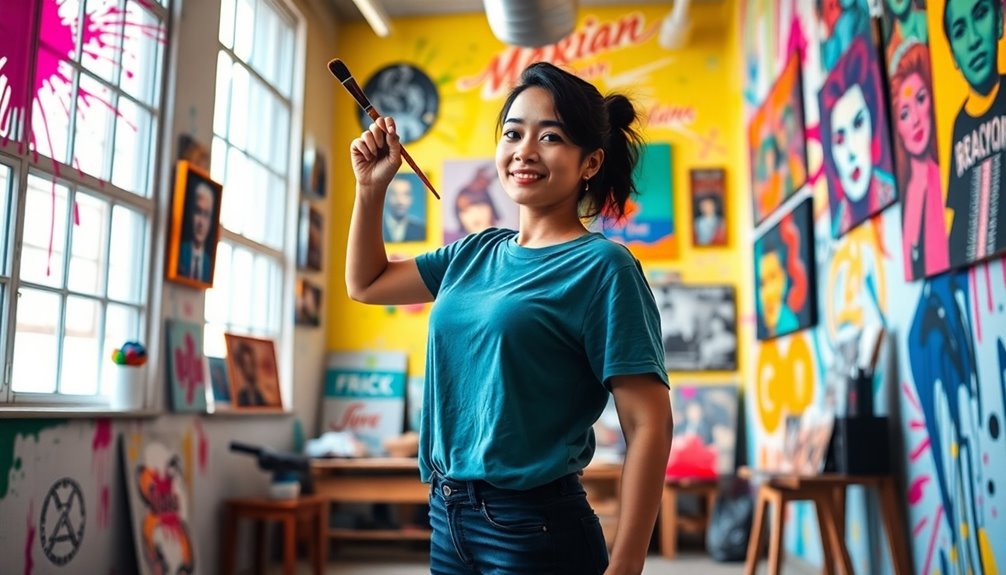
In recent years, Malaysia's art scene has undergone a vibrant transformation, embracing a pop art revolution that reflects the nation's diverse cultural identity. This shift isn't just a trend; it's a response to historical events like the 1969 race riots, which significantly influenced artists and their work. You'll notice how contemporary artists draw on these themes, reshaping their narratives to reflect the complexities of Malaysian society.
As you explore this art revolution, you can see the impact of internationalist influences that emerged in the 1970s. Artists started to experiment with diverse styles, often blending formalism and conceptualism, moving away from traditional Euro-American aesthetics. This evolution opened new avenues for expression, allowing artists to delve into indigenous arts, myths, and legends, ultimately enriching the visual landscape you encounter today. Fine art serves as a unique mode of knowledge, providing a platform for artists to share their cultural narratives and experiences.
Among the pioneers of this movement, artists like Ibrahim Hussein and Redza Piyadasa stand out. Their works, such as Hussein's reflection on the race riots, highlight the importance of addressing socio-political realities through art. You can't help but feel the weight of history in these pieces, which resonate deeply with the audiences.
Exhibitions like 'Rupa dan Jiwa' and 'Towards A Mystical Reality' have further propelled this artistic narrative, providing platforms for young contemporaries to explore innovative themes and styles. When you visit these shows, you witness a fusion of traditional forms with contemporary idioms, showcasing the philosophical and spiritual dimensions that are uniquely Malaysian.
Today, the pop art revolution continues to evolve, incorporating new technologies and global perspectives. As you engage with Malaysian contemporary art, you'll discover a distinct cultural identity that asserts itself against Western influences. This dynamic scene not only reflects the historical and cultural tapestry of Malaysia but also champions innovation, ensuring its legacy endures.
Frequently Asked Questions
What Inspired the Rise of Pop Art in Malaysia?
The rise of pop art in Malaysia was inspired by post-war consumerism and the country's economic growth, which created a desire for new artistic expressions.
You'll notice how artists blended local themes with global influences, adapting Western trends to reflect cultural identity.
The influx of ideas through cultural exchange and the focus on social commentary also fueled this movement, allowing you to see a vibrant fusion of traditional and contemporary styles emerge in the art scene.
How Can Artists Get Involved in Malaysia's Pop Art Scene?
To get involved in Malaysia's pop art scene, start by visiting galleries like Gallery des Artistes and attending exhibitions.
Participate in workshops to hone your skills and network with other artists. Utilize social media to showcase your work and connect with enthusiasts.
Collaborate on projects to foster creativity and engage with the community.
Don't hesitate to join local art fairs to gain visibility and expand your reach within the vibrant pop art community.
What Are the Key Themes in Malaysian Pop Art?
Think of Malaysian pop art as a vibrant tapestry, woven with threads of race, identity, and humor.
You'll find artists tackling the complexities of multiculturalism, often using satire to spark conversations about race.
Playful approaches engage audiences, inviting them to interpret socio-political issues in their own way.
This art reflects both local heritage and global influences, creating a dynamic landscape that resonates with people far beyond Malaysia's borders.
Are There Any Notable Pop Art Exhibitions in Malaysia?
Yes, there are several notable pop art exhibitions in Malaysia.
You might explore the Rojak Projek in Penang, showcasing local culture through art.
The GMBB exhibitions in Kuala Lumpur also offer a vibrant mix of contemporary pieces.
Additionally, events like RIUH X LAZADA creatively blend traditional and modern themes.
Don't miss the innovative ART TRAIL at W Hotel KL, where you can engage with emerging artists and their captivating works!
How Has Social Media Influenced Malaysia's Pop Art Movement?
Social media's significantly influenced Malaysia's pop art movement by giving you a platform to showcase your work and engage with a wider audience.
On Instagram, you can visually share your art, while Facebook and YouTube allow for richer storytelling.
These platforms help you address cultural issues, foster community, and experiment with innovative techniques.
Conclusion
So, as you sip your kopi and scroll through endless selfies, remember this: Malaysia's pop art revolution isn't just about pretty colors and quirky designs. It's about a fierce woman shaking up the scene like a can of soda—fizzing with creativity and daring to make you question what art really is. If you thought art was only for the elite, think again! Just like your favorite meme, it's here to stay, and it's got something to say.
